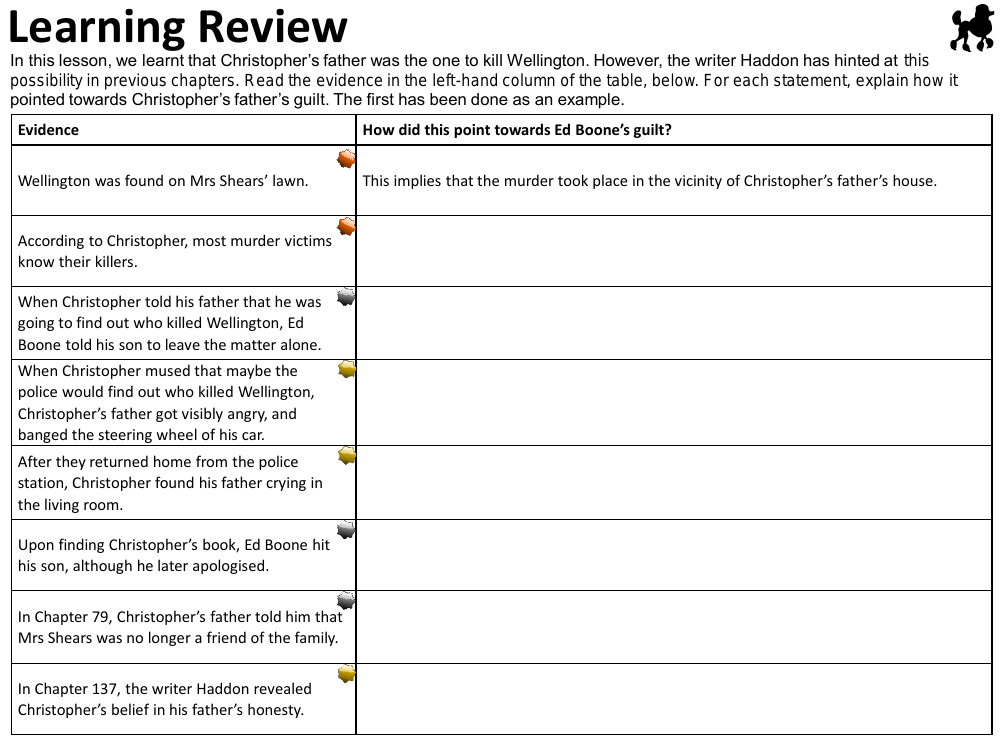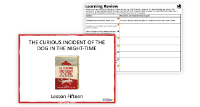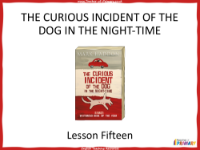The Curious Incident of the Dog in the Night-time - Lesson 15 - Worksheet

English Resource Description
In Lesson 15, we delve into the intricate details of 'The Curious Incident of the Dog in the Night-time', focusing on the evidence that implicates Ed Boone, Christopher's father, in the murder of Wellington, the dog. The worksheet provided lays out various instances from the novel that hint at Ed Boone's guilt. For instance, the discovery of Wellington on Mrs Shears' lawn suggests that the perpetrator was someone from the local area, possibly Ed Boone's house. The narrative also points out that murder victims often know their killers, which in this case, could imply a personal connection between Ed Boone and Wellington.
The lesson further explores Ed Boone's reactions to the investigation of Wellington's death. His insistence that Christopher refrain from pursuing the matter, coupled with his angry outburst when the police's potential involvement is mentioned, are telling signs. Additionally, Ed's emotional response after returning from the police station and his violent reaction to finding Christopher's book are scrutinized. The shift in the family's relationship with Mrs Shears and Christopher's belief in his father's honesty, as mentioned by the writer Haddon, are also examined. Through this analysis, students are encouraged to piece together these clues, leading to the revelation that Christopher’s father was indeed responsible for Wellington's death, a fact that Haddon had been subtly hinting at throughout the book.
The 'Do Now Activity' in the lesson serves as a quick recap of details from the book, asking students to answer questions about specific elements such as the type of dog Wellington was (a poodle), the number of red cars that make a 'good' day for Christopher (four), the name of Mrs Alexander's dog (Ivor), Christopher's favourite book ('The Hound of the Baskervilles'), and the number of moods he believes a dog can have (four). This activity not only refreshes students' memories of the novel's content but also encourages them to pay attention to the finer details that are crucial for understanding the story's development.

